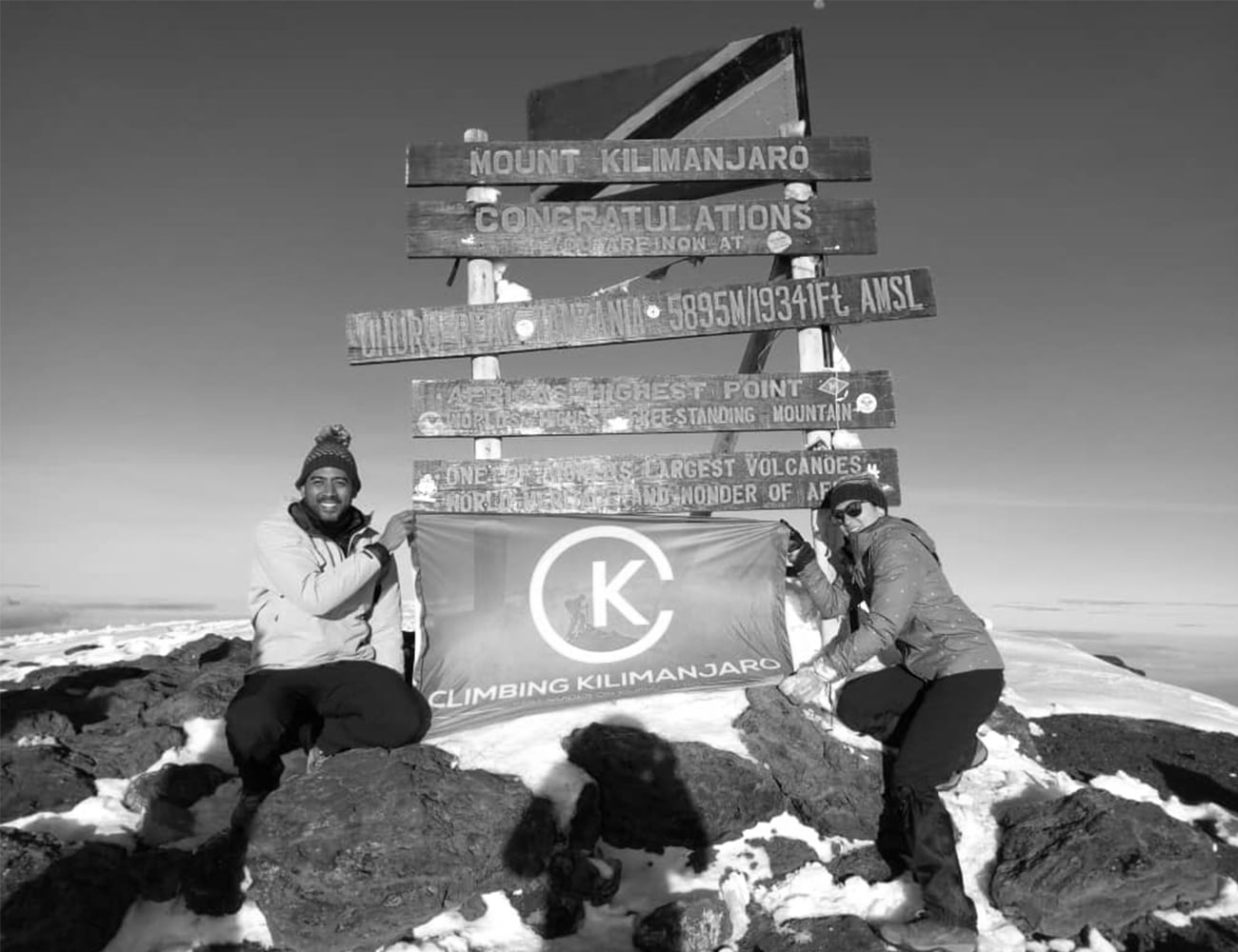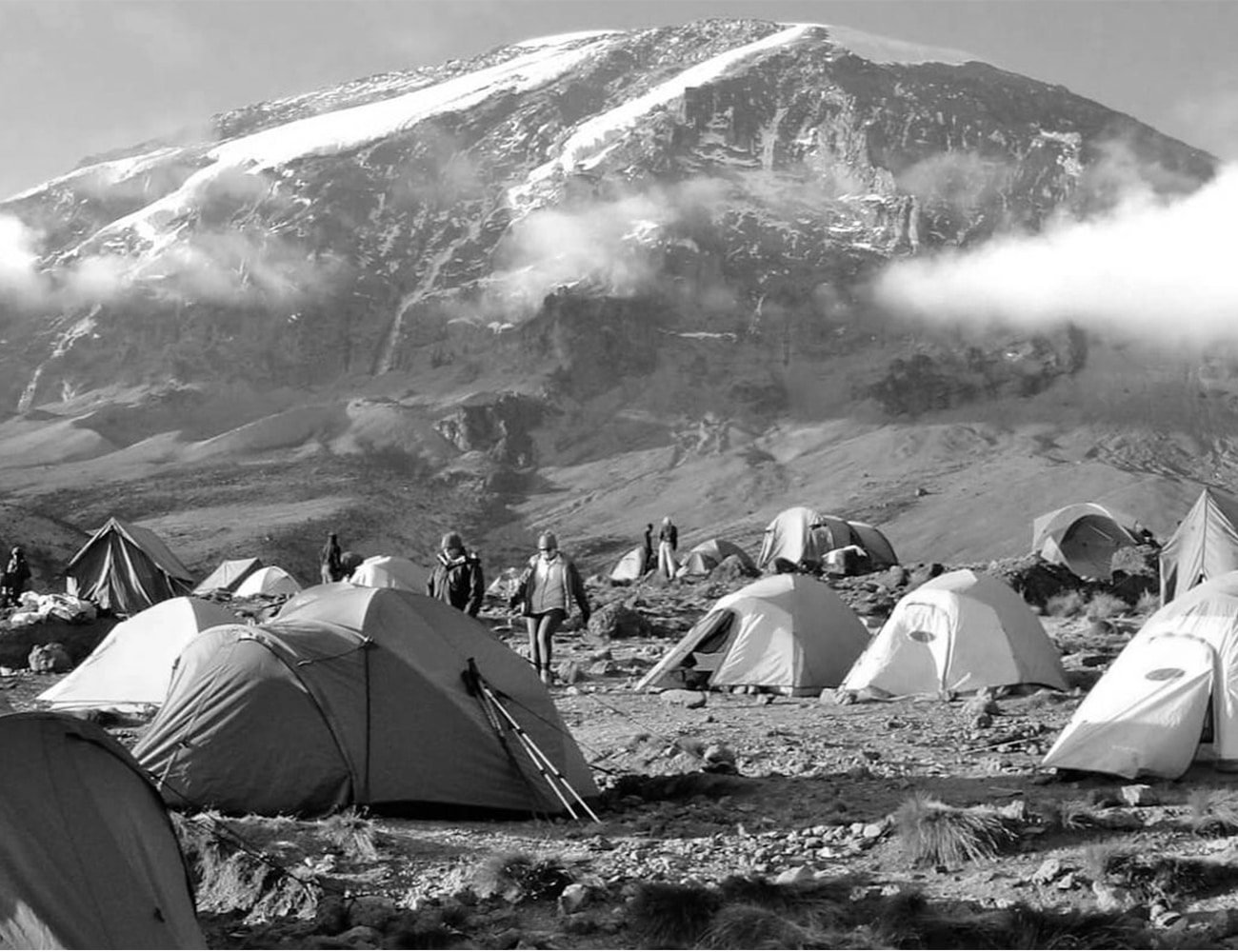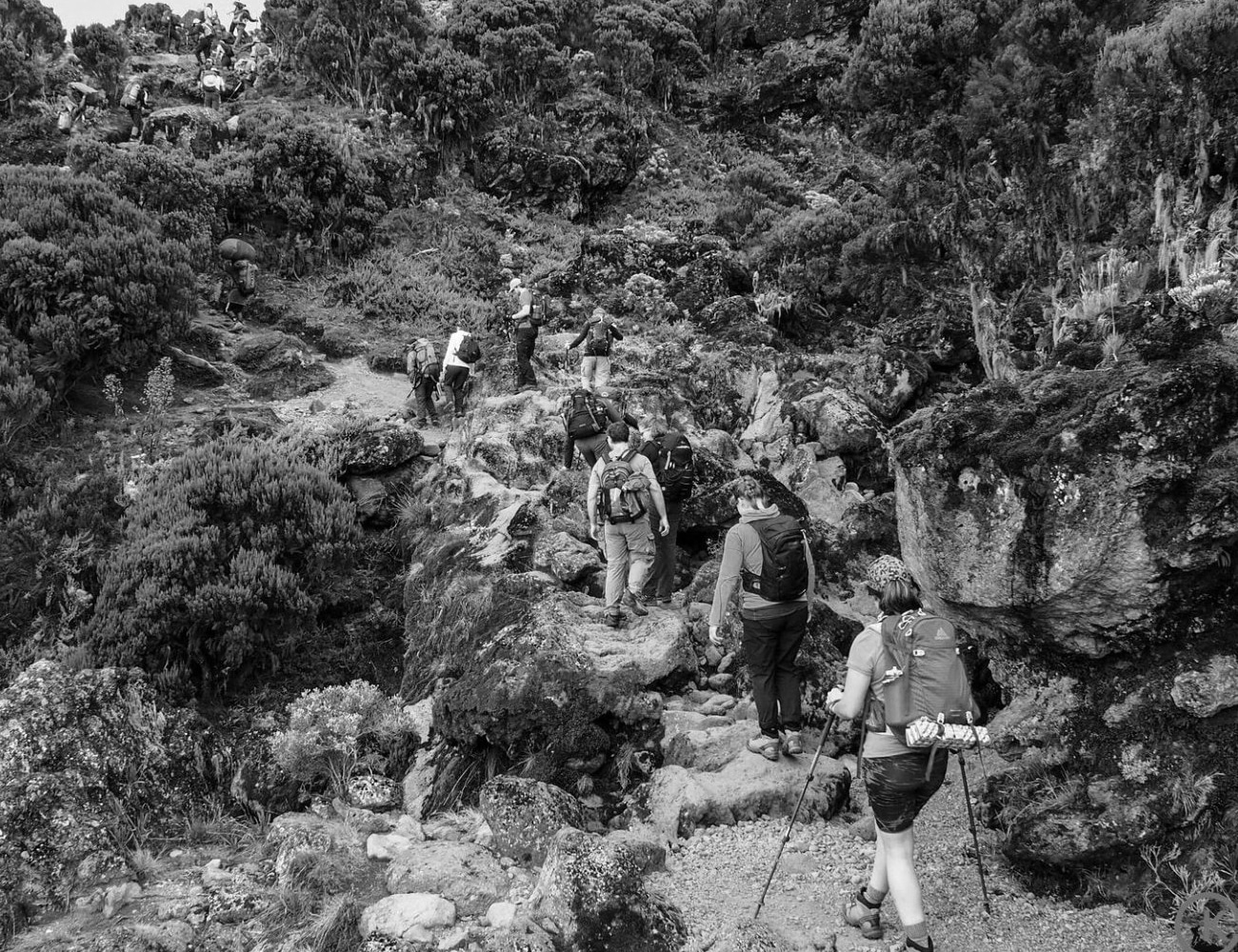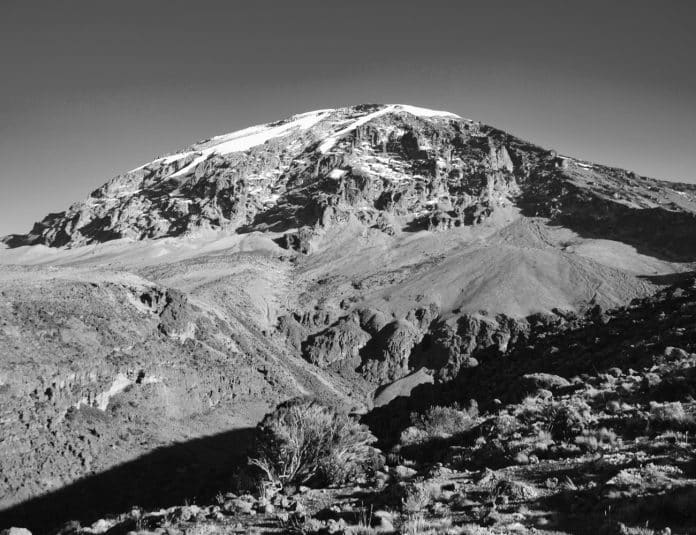Conquer the Roof of Africa: Scaling the Summit of Mount Kilimanjaro, the Highest Mountain in Tanzania and Africa
Scaling the summit of the highest mountain in Tanzania Africa, also known as Mount Kilimanjaro is a bucket-list adventure that beckons adventurers from around the globe. This iconic peak, standing tall as the highest mountain in Tanzania and Africa, offers an unparalleled experience to conquer nature’s grandeur. Standing at a staggering 5,895 meters (19,341 feet), Kilimanjaro presents a challenge that requires stamina, determination, and awe-inspiring tenacity.
As you embark on this extraordinary journey, you’ll find yourself immersed in breathtaking landscapes, from lush rainforests to barren lunar-like terrain. The expedition to the Roof of Africa is not only physically demanding but also emotionally rewarding, offering a profound sense of accomplishment with each step closer to the summit.
The allure of conquering Africa’s highest peak
Mount Kilimanjaro, the highest mountain in Tanzania Africa holds a special place in the hearts of adventurers worldwide. Its majestic presence and the allure of conquering Africa’s highest peak draw climbers from all corners of the globe. Imagine standing atop the Roof of Africa, gazing out at the vast expanse below, feeling a sense of triumph and awe. This is the allure that drives individuals to embark on the challenging journey to summit Kilimanjaro.
Beyond the personal achievement, climbing Kilimanjaro offers a unique opportunity to experience the diverse landscapes of Tanzania. The mountain is located within Kilimanjaro National Park, a UNESCO World Heritage Site, which boasts an incredible array of wildlife and natural beauty. From the dense rainforests teeming with rare flora and fauna to the barren lunar-like landscapes at higher altitudes, each step on the mountain reveals a new facet of its captivating allure.

Facts about Mount Kilimanjaro
Mount Kilimanjaro is not only the highest mountain in Tanzania Africa, but also the highest freestanding mountain in the world. It is a dormant volcano with three distinct volcanic cones: Kibo, Mawenzi, and Shira. Kibo, the highest cone, is the ultimate destination for climbers seeking to conquer the summit.
One of the remarkable features of Kilimanjaro is its accessibility to climbers of various skill levels. While it presents a formidable challenge, it does not require technical mountaineering skills or the use of specialized equipment. This accessibility, combined with the mountain’s impressive altitude, makes Kilimanjaro a popular choice for those seeking their first high-altitude climbing experience.
Choosing the right route for your Kilimanjaro climb
When planning your Kilimanjaro climb, one of the most crucial decisions you’ll make is choosing the right route. Several routes lead to the summit, each offering a unique experience and level of difficulty. The most popular routes include Marangu, Machame, Lemosho, and Rongai.
The Marangu route, also known as the “Coca-Cola” route, is often chosen by climbers seeking a more comfortable and less strenuous option. It features hut accommodations along the way, providing a reprieve from camping. However, its popularity means it can be crowded during peak seasons.
For those seeking a more challenging and scenic route, the Machame route is a popular choice. It offers stunning views and takes climbers through diverse landscapes, including the famous Barranco Wall. This route is ideal for individuals with prior hiking experience and a good level of fitness.
The Lemosho route, known for its longer duration and gradual ascent, allows for better acclimatization and increased chances of successfully reaching the summit. It is less crowded and offers breathtaking views of the surrounding wilderness.
The Rongai route, starting from the northern side of the mountain, provides a unique perspective and is often less crowded than other routes. It offers a more remote and wild experience, with the possibility of spotting wildlife along the way.
When choosing your route, consider your fitness level, prior hiking experience, and personal preferences. It’s essential to find a route that aligns with your goals and abilities to ensure a safe and enjoyable climb.

Preparing physically and mentally for the climb
Preparing for a climb to the highest mountain in Tanzania Africa requires both physical and mental readiness. The mountain presents various challenges, including high altitude, steep ascents, and changing weather conditions. Building your fitness and endurance is crucial to increase your chances of a successful summit.
Start by incorporating regular aerobic exercise into your routine, such as hiking, jogging, or cycling. Focus on building your cardiovascular fitness and stamina. Additionally, include strength training exercises to strengthen your core, legs, and upper body, as they will be put to the test during the climb.
It’s also essential to acclimatize your body to higher altitudes. Consider planning a few high-altitude hikes or climbing smaller peaks in the months leading up to your Kilimanjaro expedition. This will help your body adjust to the reduced oxygen levels and mitigate the risk of altitude sickness.
Mental preparedness is equally crucial for a successful climb. Climbing Kilimanjaro requires mental resilience, as it can be physically and emotionally challenging. Prepare yourself for long days of hiking, unpredictable weather conditions, and the inevitable moments of fatigue. Developing a positive mindset and determination will help you push through the tough times and keep you focused on reaching the summit.
Essential gear and equipment for a successful summit

Having the right gear and equipment is essential for a safe and successful Kilimanjaro climb. While the mountain does not require technical mountaineering equipment, there are several key items you should have to ensure your comfort and safety during the expedition.
First and foremost, invest in a good pair of hiking boots that are comfortable and provide adequate ankle support. Your boots will be your best friend on the mountain, so it’s crucial to find a pair that fits well and has been broken in before the climb.
Layering is key when it comes to clothing. Dress in layers to accommodate the changing weather conditions and temperature fluctuations throughout the climb. Start with a moisture-wicking base layer, followed by insulating layers and a waterproof and windproof outer shell.
Other essential gear includes a sturdy backpack, a warm sleeping bag, a headlamp, trekking poles, and a water purification system. It’s also crucial to pack high-energy snacks and hydration systems to keep you fueled and hydrated during the climb.
Climbing strategies and acclimatization techniques
Climbing the highest mountain in Tanzania Africa requires careful planning and strategic pacing to ensure proper acclimatization. Rapid ascent without allowing your body enough time to adjust to the high altitude can lead to altitude sickness and jeopardize your climb.
The “pole, pole” mantra, meaning “slowly, slowly” in Swahili, is frequently repeated by guides on the mountain. This strategy emphasizes the importance of maintaining a slow and steady pace, allowing your body to adapt to the changing altitude and reduce the risk of altitude-related illnesses.
In addition to pacing yourself, proper hydration is crucial for acclimatization. Drink plenty of water throughout the climb to stay hydrated and help your body adjust to the altitude. Consider using a hydration system or water purification tablets to ensure a constant supply of clean water.
During the ascent, it’s common to experience mild symptoms of altitude sickness, such as headaches, nausea, or dizziness. It’s important to communicate any discomfort to your guide and team members to ensure appropriate measures are taken. If symptoms worsen or persist, descending to a lower altitude may be necessary to avoid further complications.
Safety precautions and potential challenges on the mountain
Climbing Kilimanjaro comes with inherent risks and challenges, but with proper preparation and precautions, these can be mitigated.
One of the most significant risks on the mountain is altitude sickness. It’s crucial to listen to your body and communicate any symptoms to your guide. Climbing at a slow and steady pace, staying hydrated, and properly acclimatizing are essential for reducing the risk of altitude-related illnesses.
Weather conditions can be unpredictable on Kilimanjaro, with temperatures ranging from scorching heat to freezing cold. Come prepared with appropriate clothing and gear to handle changing weather conditions. Be aware of signs of hypothermia and frostbite and take necessary precautions to prevent these conditions.
Another challenge climbers often face is the steep and rocky terrain. The ascent and descent can be physically demanding, putting strain on your muscles and joints. Proper training and conditioning prior to the climb can help minimize the risk of injuries.
It’s crucial to choose a reputable and experienced tour operator or guide to ensure your safety on the mountain. They will have the necessary knowledge and expertise to navigate the challenges and provide necessary support throughout the climb.
Tips for a memorable and successful Kilimanjaro climb
To make your Kilimanjaro climb a memorable and successful experience, consider the following tips:
- Start your training and preparation well in advance to build your fitness and endurance.
- Research and choose the right route for your goals and abilities.
- Pack lightweight, moisture-wicking clothing that can be layered for varying weather conditions.
- Invest in a good pair of hiking boots and ensure they are broken in before the climb.
- Stay hydrated by drinking plenty of water throughout the climb.
- Listen to your body and communicate any symptoms of altitude sickness to your guide.
- Follow the “pole, pole” mantra and maintain a slow and steady pace during the ascent.
- Take breaks and allow your body time to rest and recover.
- Enjoy the journey and take in the breathtaking landscapes around you.
- Celebrate your accomplishments and cherish the memories of reaching the summit.
The rewarding experience of reaching the summit of Mount Kilimanjaro
Scaling the summit of the highest mountain in Tanzania Africa—Mount Kilimanjaro is an extraordinary adventure that offers a profound sense of accomplishment and awe. The journey to the Roof of Africa immerses climbers in breathtaking landscapes, tests their physical and mental endurance, and rewards them with unparalleled views and a transformative experience.
Conquering Kilimanjaro requires careful planning, physical preparation, and mental resilience. Choosing the right route, having the essential gear, and acclimatizing properly are key factors in a successful climb.
As you stand atop the highest mountain in Africa, you’ll be filled with a sense of triumph and wonder. The memories of your Kilimanjaro climb will stay with you forever, reminding you of your ability to conquer challenges and embrace the beauty of nature.
Embark on this once-in-a-lifetime adventure, join the ranks of those who have dared to scale the summit, and unlock the incredible beauty that awaits atop the Roof of Africa. Conquer Mount Kilimanjaro and experience a journey that will leave you forever changed.
For more articles related to Mountains of Tanzania, click here!

































